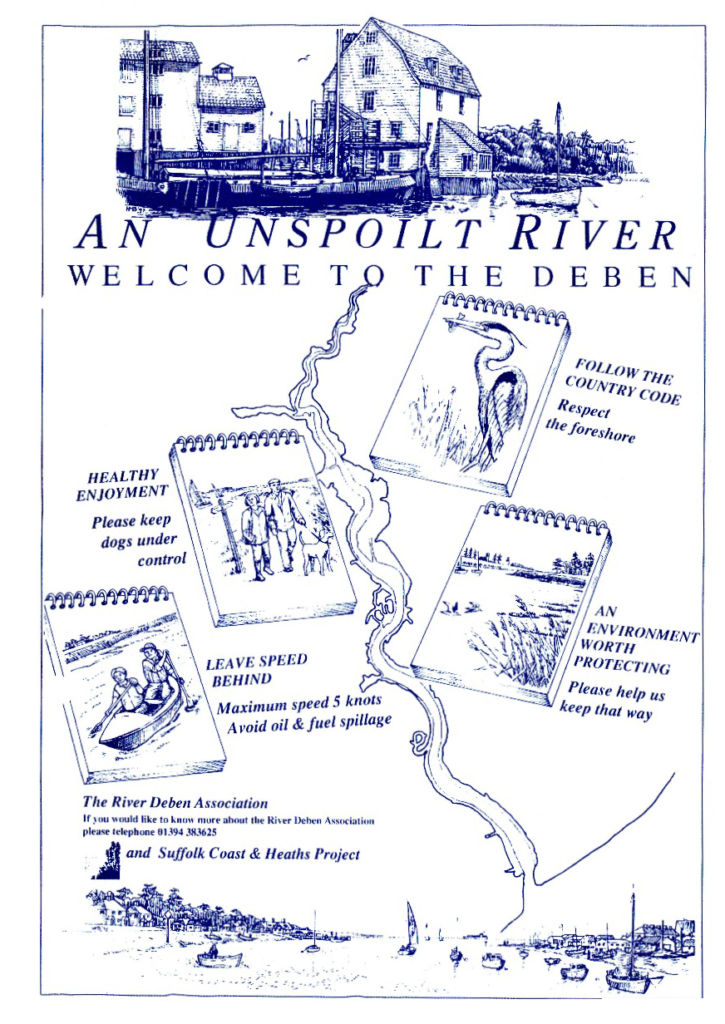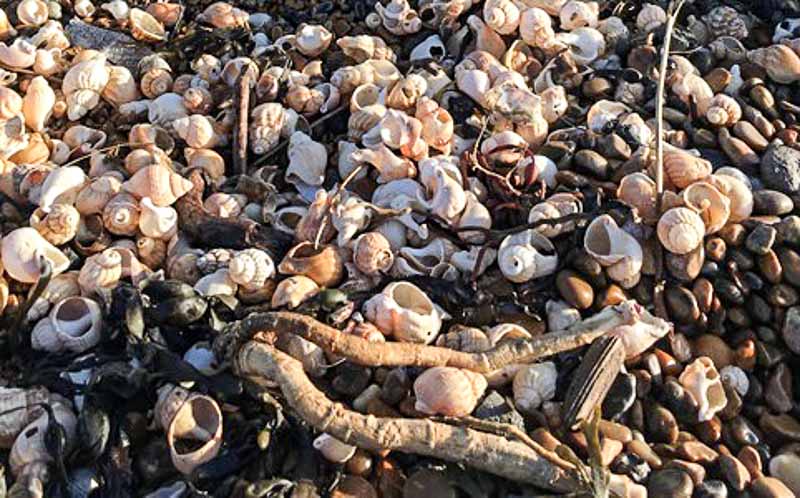By Bertie Wheen
…by a river we all call home, there was born an association.

Page 5 of the River Deben Association Newsletter, Spring 1997.
Continue reading
By Bertie Wheen
…by a river we all call home, there was born an association.

Page 5 of the River Deben Association Newsletter, Spring 1997.
Continue readingBy Gary Rogers
In the light of COP26 we should all be questioning our energy use. As boat dwellers we aren’t eligible for government grants and feed in tariffs but that shouldn’t stop us taking steps to a more sustainable energy use.
As an Electronic Design Engineer living afloat for the last 30 years, I have inevitably tried and tested a multitude of off grid solutions, some more successful than others.
Tijdstroom, the Dutch barge Gary and his wife Bev live on, during the 2020-2021 winter
By Russell Read
This article is prompted by the enthusiastic piece from Matt Lis in The Deben Magazine for Autumn 2021 which suggests that there is a strong case for larger boats than Josh Masters’ launch to go electric. Well, the 1907 26’6” Albert Strange-designed canoe-yawl Mist is one very classic yacht which, originally intended to be engineless, has already done this.
by Josh Masters
Introduction from Julia Jones (RDA Journal Editor):
I am one of many river users who is currently wondering what I can do to reduce my carbon emissions. The RYA (Royal Yachting Association) has recently published their aspiration to make the UK’s recreational boating sector zero carbon by 2050 with a 50% reduction in carbon emissions from boat engines by 2030. https://www.rya.org.uk/about-us/policies/environment-and-sustainability.
It’s perhaps easier to see what can be done with new-build boats than with yachts like mine, built as a motor-sailor in 1946. While I can safely undertake to use my sails as frequently as possible (that’s the joy of being a water-born hybrid) it will remain impossible to push one’s way out of the narrow Deben entrance against a spring flood if the wind is adverse. Continue reading
By Robin Whittle
Introduction. This article describes an investigation concerning the maintenance of the river wall to Flood Cell 01. This has led to an understanding of how the raising of any river wall in the estuary will affect the possible flooding of other flood cells. The work has resulted in providing the landowners with the results and a proposal for a protocol for the maintenance of the river walls.
Figure 1 (taken from the Deben Estuary Plan, 20151) shows the topography of the flood cells.
By Sally Westwood
The Oystercatcher lifted itself up, its legs unfolding slowly, and stepped out of the central space of a coiled rope. An egg lay in the space, the rope provided a wall for the nest. The nest was on the top of a 50-60 foot, river maintenance vessel. The boat was used for clearing channels and ditches, effectively keeping the river flowing. It had a crane at one end, and a vast square hold in the centre. The Oystercatchers had their nest on a flat surface at the other end of the vessel. The Oystercatcher called four times, at the edge of the vessel. Its mate arrived, and landed on a rusty, round, steel stanchion. It walked over to the nest, stepped in and lowered itself down onto the egg. Adjusting itself by wobbling from side to side, to comfortably cover the speckled egg. Eggs are incubated for 24 to 35 days.1 The other Oystercatcher flew off to the blades of grass and green weed at the edge of the water, abundant because of the warm weather. Tide was high and coming in. That was day eight, for the egg in the rope. Continue reading
by Kate Osborne
 This photograph was taken around the winter solstice in 2017. During the last lockdown I found myself studying it intensely longing for the day when I could go back to the beach. Beach-combing may appeal in sunnier weather but it’s the winter winds and storms that cast up the most treasure. Continue reading
This photograph was taken around the winter solstice in 2017. During the last lockdown I found myself studying it intensely longing for the day when I could go back to the beach. Beach-combing may appeal in sunnier weather but it’s the winter winds and storms that cast up the most treasure. Continue reading
by Richard Steward and Robin Whittle
Introduction
Estuary saltmarshes are an ecologically unique tidal area of marshland which is regularly flooded with salt or brackish water and then drained by the lowering tide. The River Deben has the highest amount of saltmarsh of any Suffolk River. It extends 18km from Felixstowe Ferry up to Melton. The width of saltmarsh between the river channel and bank varies from nothing to over 600m between Hemley and Waldringfield. Salt-tolerant plants stabilise incoming sediment creating a marsh environment that supports the aquatic food chain, provides essential coastal flood protection and improves carbon storage.